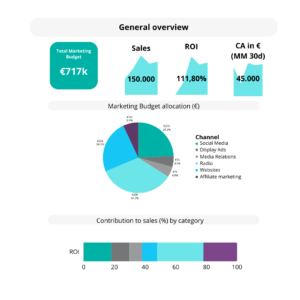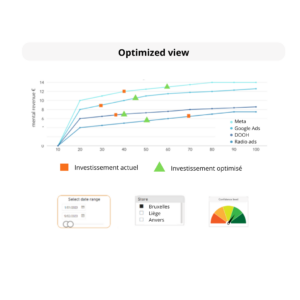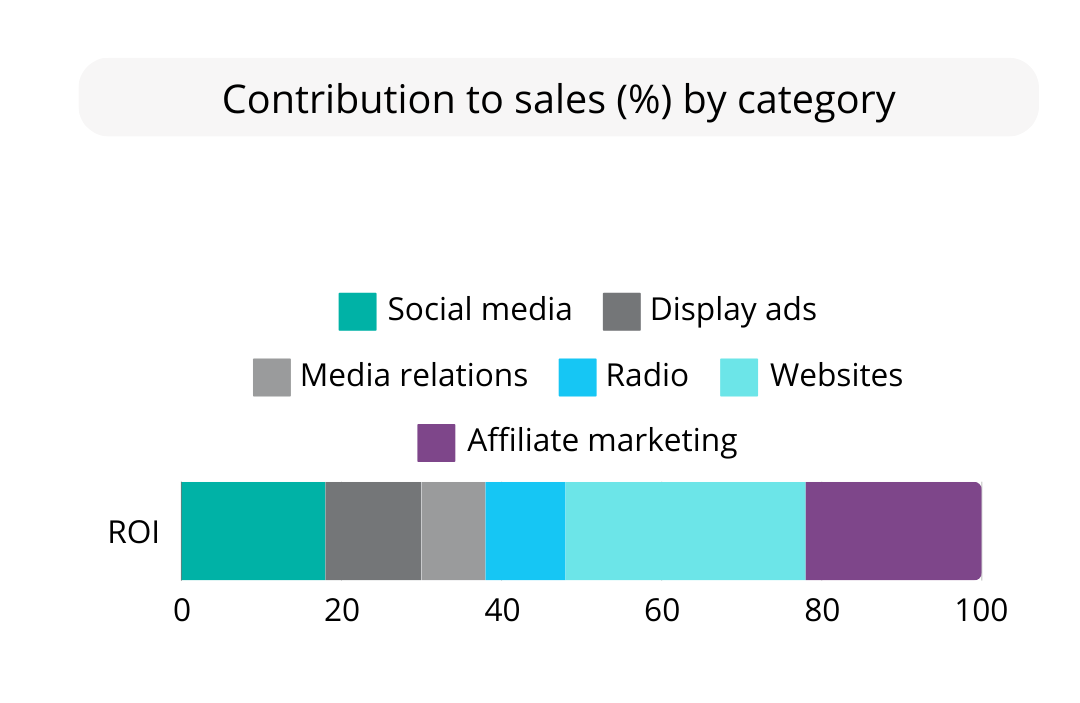In recent years, few business disciplines have evolved as rapidly as digital marketing. This fast evolution introduces considerable complexity. On one hand, there is an overwhelming flood of marketing data; on the other, increasing privacy constraints. The critical question facing marketers today is how to effectively see through this massive amount of information. Which marketing techniques yield the highest return on investment? Where is my budget best used? This is where Marketing Mix Modeling (MMM) comes into play: decoding your marketing data to understand your consumer preferences, behaviors, and purchase patterns. Ultimately, Marketing Mix Modeling turns data overload and complex attribution into strategic insights to help you make the best marketing decisions.
Understanding your marketing ROI
Imagine that you are managing a store, and you suddenly see a high number of customers. How did those people come here? Did they see your ad in the street? A social media post on their phone? Did they come because they received a coupon in their mailbox? Or everything at once…? If you are selling services or if you have an e-commerce site, the questions are very similar: What works best in your marketing mix? Where should you invest, or disinvest?
These questions are even more complex since the introduction of privacy regulations such as GDPR (General Data Protection Regulation). When consumers do not give their consent to third-party cookies, or reject tracking from their apps, understanding their behavior becomes even more difficult. In short, marketers today face increasing challenges to attribute consumer actions to specific campaigns or touchpoints.
The good news is that the advent of Big Data Analytics (BDA) and machine learning has revolutionized our ability to analyze and interpret vast data sets, offering much more visibility in this marketing maze. This is what the Marketing Mix Modeling offers.
What is Marketing Mix Modeling?
Marketing Mix Modeling is a statistical approach, analyzing all your marketing variables (e.g. your media tactics, but it can also include your promotions, or external factors like the weather) and determining their respective contribution to your sales.
Marketing Mix Modeling is not a newcomer in the marketing arena. Traditionally, it was a resource-intensive process, accessible only to a few, and most of the time not including all of the newcoming digital channels. But with new technologies, times have changed. MMM now reconciles both offline and online data and can be configured to deliver easily actionable recommendations for marketers.

Benefits of marketing mix modeling
Marketing Mix Modeling allows businesses to interpret vast amounts of data. But it can also offer:
- Deep understanding of consumer behavior: Marketing Mix Modeling helps to better understand which messages, products or promotions meet best the customer’s needs, thereby allowing for the adjustment of marketing strategies to better target and engage the audience,
- Optimization of resource allocation: Marketing Mix Modeling offers a detailed analysis of the effectiveness of each marketing campaign and channel. You can then strategically allocate your marketing budget, investing more in high-performing channels and reducing budgets in less effective ones. This leads to a more efficient use of resources and an increase in return on investment (ROI),
- Improvement of Overall Strategy: Marketing Mix Modeling reveals a holistic view of the impact of marketing campaigns, incorporating a range of factors such as market trends, economic conditions, and competition. This comprehensive understanding can assist you in refining your overall marketing strategy.
In this way, Marketing Mix Modeling is not just a tool. It is a strategic compass guiding marketers through the ever-changing landscape of digital marketing. It ensures that every decision is backed by robust, actionable data. This also helps marketers justifying their budget needs internally and setting clear KPIs.

How does Marketing Mix Modeling work? Introducing your Marketing Digital Twin!
To help marketers implement and develop their own MMM, we are happy to announce Universem’s partnership with Valkuren. We leverage our in-depth knowledge of digital marketing data and its collection, whilst relying on Valkuren’s expertise in big data engineering. The result? The development of our client’s Marketing Digital Twin: a virtual model that replicates the client’s marketing mix and its customers’ behavior.
Here is how the process works to develop your Digital Twin:
- Data collection: We integrate all your offline and online data in a single location. External data can also be added (e.g. the weather, the day of the week, specific events, etc.).
- Data processing: We clean, reorganize, transform, align all data’s nomenclature, and establish the rules to connect the data between them.
- Model training: We define the model, and we train the model based on a set of historical data, to understand what weight each variable has and its impact on the performance. This allows us to identify the variables with the most impact and their relevance. For example, the weather might be truly relevant for an ice cream shop or a cinema, but not for a supermarket.
- Validation: We compare the model’s predictions, derived from a set of historical data, with actual historical results, serving as a control set to ensure accuracy and reliability. This allows us to validate or not the model and determine if the confidence rate is acceptable to proceed to the next steps.
- Deployment: When the virtual twin model is validated, we then deploy it to integrate and analyze data in real time.
This model allows our clients to analyze and predict the impact of their marketing strategies.
Conclusion: is it time for you to adopt Marketing Mix Modeling?
In summary, Marketing Mix Modeling provides a strategic edge for marketers. If you want to be able to make data-driven decisions, optimize your marketing expenses, and justify your spending internally, Marketing Mix Modeling is right for you!
If you want to understand what MMM can bring to your business, contact us for an introductory discussion!


